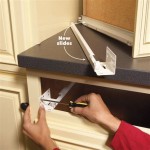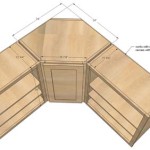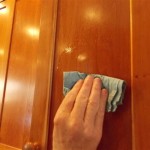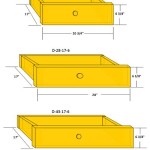Cleaning Kitchen Cabinets with Baking Soda and Coconut Oil: A Natural and Effective Guide
Maintaining a clean and organized kitchen is essential for both hygiene and aesthetics. Kitchen cabinets, being one of the most frequently used surfaces in the kitchen, tend to accumulate grease, dirt, and grime over time. While harsh chemical cleaners may seem the quickest solution, they can damage the finish of your cabinets and pose health risks. This is where baking soda and coconut oil come into the picture.
Baking soda is a natural and non-abrasive cleaning agent with deodorizing properties. It helps neutralize odors and gently removes dirt and grime. Coconut oil, on the other hand, is a natural antibacterial and antifungal agent that adds a beautiful shine to wood surfaces. Together, they form a powerful cleaning duo that is safe and effective for cleaning kitchen cabinets.
Here's a step-by-step guide to cleaning kitchen cabinets with baking soda and coconut oil:
1. Preparation
Before you begin cleaning, gather the necessary supplies: a bowl, a soft cloth or sponge, baking soda, a tablespoon of coconut oil, and a few drops of your favorite essential oil (optional). If your cabinets have glass inserts, prepare a separate solution of equal parts vinegar and water for cleaning them.
2. Create the Cleaning Paste
In a bowl, combine equal parts baking soda and coconut oil. Stir until you obtain a thick paste. Add a few drops of essential oil for a fresh scent, if desired. The paste should have a slightly loose consistency for easy application.
3. Apply the Paste
Using a soft cloth or sponge, apply the baking soda and coconut oil paste to the surface of the cabinets. Work in small sections and use gentle circular motions to remove dirt and grime. Avoid using excessive pressure or abrasive brushes, as they can damage the finish.
4. Leave it to Sit
After applying the paste, allow it to sit on the cabinets for 10-15 minutes. This gives the baking soda time to neutralize odors and absorb grease. It also allows the coconut oil to penetrate the wood and add shine.
5. Wipe Clean
Once the paste has sat, wipe it away using a clean, damp cloth. Rinse the cloth frequently in clean water to avoid spreading dirt. For glass inserts, use a solution of vinegar and water and wipe clean with a microfiber cloth to prevent streaks.
6. Polish
To enhance the shine of your cabinets, apply a thin layer of pure coconut oil to a clean cloth and go over the surfaces. This will leave a beautiful luster and help protect your cabinets.
Tips
- Test the cleaning solution on an inconspicuous area first to ensure it does not damage the finish of your cabinets.
- For stubborn stains or grease, allow the baking soda paste to sit for longer before wiping clean.
- Clean your cabinets regularly to prevent dirt and grime buildup. Weekly or bi-weekly cleaning is recommended for high-traffic areas.
- Store the unused baking soda and coconut oil paste in an airtight container for future use.
Cleaning kitchen cabinets with baking soda and coconut oil is a natural, effective, and budget-friendly solution. It not only removes dirt and grime but also deodorizes and adds a beautiful shine to your cabinets. Embrace this eco-friendly cleaning method and enjoy a clean and fresh kitchen.

How To Clean Grimy Kitchen Cabinets With 2 Ingredients

How To Clean Grease From Kitchen Cabinets Trends Wood Finishing

How To Clean Grimy Kitchen Cabinets With 2 Ingredients

5 Chemical Free Cleaning Methods For Your Kitchen Hometalk

How To Clean Grimy Kitchen Cabinets With 2 Ingredients

Tips To Clean Kitchen Cabinets Healthylife Wer

How To Clean Grimy Kitchen Cabinets With 2 Ingredients

How To Deep Clean Kitchen Cabinets And Keep Them Looking Gorgeous Everyday Skate

How To Clean Kitchen Cabinets 4 Home Remedies For An Easy Cleanup

5 Cleaning S That Will Make Your Kitchen Cabinets Look Brand New Specialty Bath
Related Posts








